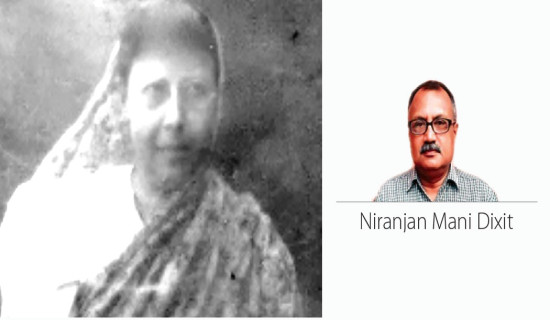- Friday, 27 June 2025
The White Dot
Taking a turn has always been difficult for Carson. His room did not give him happiness. He was well-read, but still, he couldn’t read his own heart. The outside temperature was 40 degrees Celsius. The summer heat was melting his painted flowers. His art was lonely. He had begun to work on his spontaneity. His stream-of-consciousness writing habit. He read poetry, and it felt like a winding road, not a straight redemption. Our expressions are abstract, but we feel the pain clearly in our burdened hearts. Friends were like strangers to him, who only communicated during hours he did not need. The days felt like the same every day.
He opened his windows, and the roadway seemed happy. There were little ice cream men with their tiny carts of ice cream. Children were following them. The galore of happiness in the street was like the spring air, but the gloomy décor of Carson’s room was the inner dimension of his heart. He lifted his paintbrush and dipped it in white colour. He liked the musicality of the colour white—the blankness that invited expressions. He painted a white dot against a blue background. He wanted to give the dot wings to match the blue sky's background.
After a few minutes, he heard a knock on his door. Devin, the photographer, had arrived.
“I came yesterday in the evening but was called at the gallery, so I left,” Devin said.
“You could have let me know; I was cursing my loneliness yesterday the whole time,” Carson said to Devin.
“Work in progress always has some meaning, Carson,” Devin said.
Carson felt like he needed someone to talk to. His painting about the dot made him feel different about himself, and he enjoyed it.
The air felt like all the whiteness was revealing something in a dot. Carson imagined touches and fingers that made the white dot muddy. He could almost hear voices over white telephones. The questioning voices felt like touches. The voices could question what the dot was signifying and what it concealed for most of the part.
Devin looked at the white dot and said he was at peace with it. The dot did not have wings, but he felt it was something pure and at a reasonable height so that boot heels could not muddy it. Devin said the blue background provided a reasonable height and placed it in the sky to look up to. The white dot carried silence and stood like the test of the age torn down in the war economy.
Devin said, “I feel like a void, but I dare to call it Soonyata instead.”
Soonyata is verbal in all that it can represent. We could make the list. The observer of a painting could situate his understanding and suit it to himself. The rage melts down for holiness and humanity; the colour of the ashes could be peaceful.
Devin decided to photograph the painting and send it to the Council of Arts Festival for initial approval to display at their upcoming event.
The blue background and a white dot are larger and filled in at their circumference.
Carson was worried about its interpretation and understanding, but he felt that his silence was represented in the painting of the white dot.
In its slow reveal, Carson was somehow silenced by life and stuck in time. He felt a wind of patience stroking him gently. And he had tried to smooth his understanding of life with a peaceful white that could soothe him from his inner core.
Interpretations of a painting can be subjective; it could ease or cause creases.
“White is a revolution against all that scars.” The formal opinion came from the Council of Arts. They had accepted the painting and promised to keep a discussion session on it because simplicity needs to be the next discourse of this dishevelled time.
The Happiness of the Roadway by Carson was another painting displayed in the Council of Arts gallery. And the Council was infamous for organising talk sessions on the paintings they displayed.
The dot, followed by another painting where children follow the ice cream van and are jubilant in all respects, really photographed the flow of change in Carson’s mentality. Carson knew himself through his art. That is what art should do—igniting a conversation within an artist to know about himself and how the art was born. Art passes through himself, and he seeks the world. This feeling in Carson right now was the turn that he was missing. And he felt the bang of it now; it came like a sudden realisation.
From his room to the talk session studio, Carson stood transformed. Carson said he wanted to define his nervousness, which made him silent. Therefore, he chose white. He wanted to cover up the colours that distracted him. Carson said in the talk session regarding his paintings that he felt composed when he chose white, as if there was more to life.
“Only after I chose white was I able to draw the galore of happiness in the street next,” Carson answered the journalist.
The journalist said Carson lived up to what he drew. If this is how an artist is moved by his art, the art should be valued more. But Carson said he was waiting to listen to the observer’s opinion.
“Can Soonyata be verbal?” Carson was asked.
“Yes, if we find it verbose,” Carson added.
“If it can surge an ocean of emotion in us,” Simon, the art journalist, added.
Carson had felt the void in him; now, he felt different. He felt that inspiration had to find him working—it was just like the quote he read somewhere.
Soonyata became his ideology. The more he found meaning in it, the more pure he felt regarding himself. It was unlike the nihilistic void that ate him from inside. The shawl of meditative trance fell over him. He felt that when one paints how one feels, one changes how one feels for good. That white dot was a Soonya, and when we start revealing its layers, it fills the void; after all, it is also a creation.
A buyer wanted to purchase the painting for his evening office.
He specifically mentioned his evening office. The dot looked like a moon to him. He felt it could radiate an aura that could enlighten the mentality of the night inside his office. The dot was a complete presence. A companion that was simple and wholly present—as if surrendering itself for companionship.
Some people look for peaceful objects that could accompany their moods at work. A room of interpretation would always make their mind active and searching.
The buyer said that instead of an exact moon, he wanted a symbolic moon. Just to tickle his mind and keep it awake beside his desk while he worked on translating “The Master and Margarita” by Bulgakov. The painting touched many moods of many people. It came across different interpretations. The mood of an artist transformed into telepathy. Everybody wanted the inspiration that could find them working.
The buyer has bought the painter's mood, which suits his mood. He began to work once the painting got fixed on his wall.
While buying the painting, the buyer said, “An artist shouldn’t do away with his mood. Moods create works of art that inspire thousands of other moods. Moods are like hidden gems. It is all contagious.”
He added that the buyer's mood is also a true artist's responsibility. If an artist is true to himself and his mood, he won’t destroy the buyer's mood.
Peace is simple, and simplicity is the shining complexion. When expression is spilt, it says something. It loosens the burden and heaviness that perches in our souls. S
o, the flow is important to carry on the artist's mentality. When Carson represented his white dot, his surroundings magically began to change. His life as an artist began to be less lonely. He has found peace, but he still feels that it should find him working. The work is like the clock that ticks forever. It should go on despite any season. Carson spoke his last words that day at the Council of Arts.
“We suffer more in imagination than in reality,” Seneca had said.
“I did not like my room and was thinking of quitting my work as an artist. But I drew the white dot, which gave me reasons to continue. It changed my reaction to my situation.”
“Like Maya Angelou said, bearing an untold story is the greatest pain.”
“I have realised that holding back and giving your heart the trouble to bear is unworthy. An artist must never cease to express.”
“The paintings we draw are like the lessons we learn.”
(Thapa is an English lecturer.)















